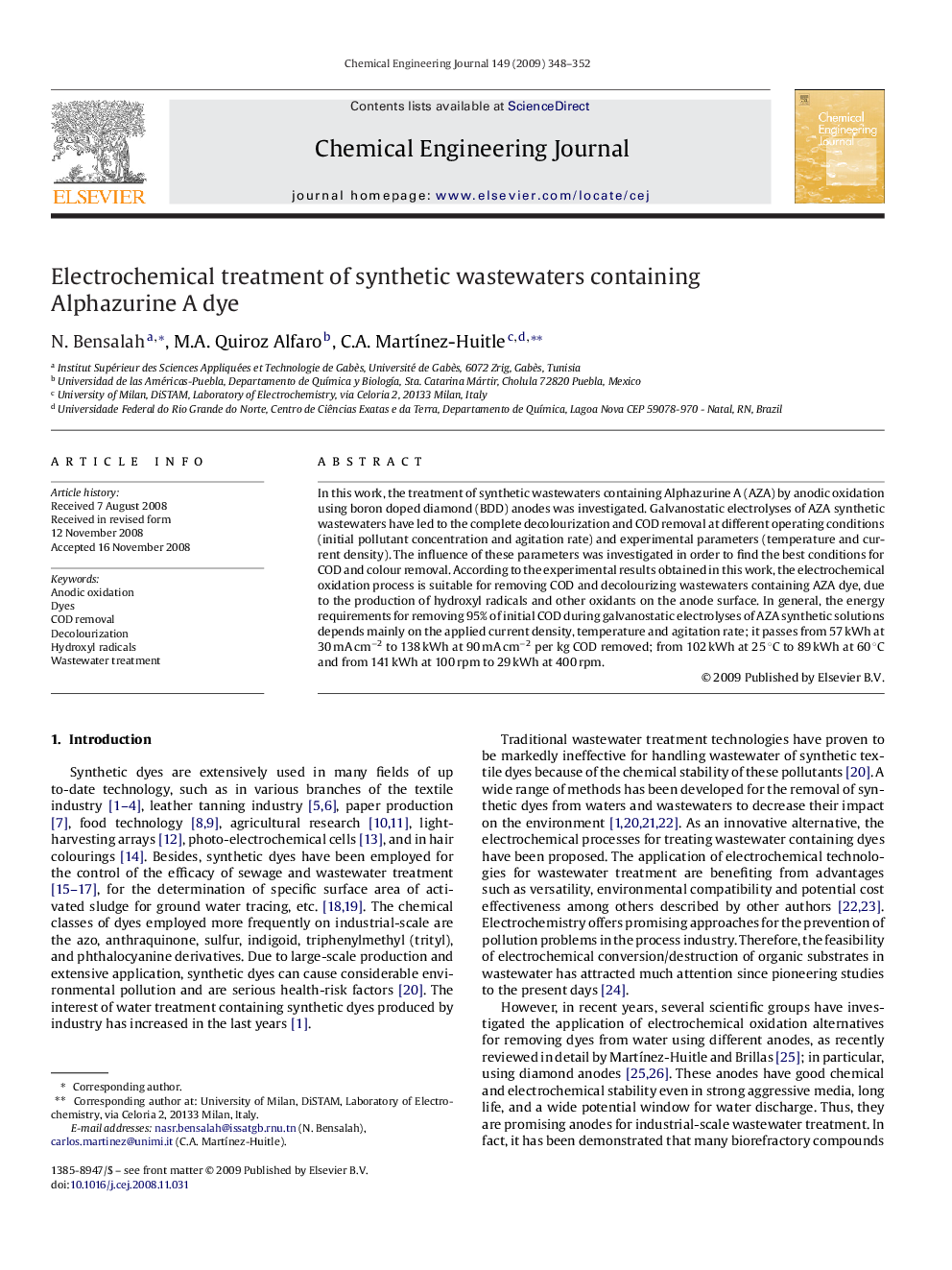| کد مقاله | کد نشریه | سال انتشار | مقاله انگلیسی | نسخه تمام متن |
|---|---|---|---|---|
| 152332 | 456493 | 2009 | 5 صفحه PDF | دانلود رایگان |

In this work, the treatment of synthetic wastewaters containing Alphazurine A (AZA) by anodic oxidation using boron doped diamond (BDD) anodes was investigated. Galvanostatic electrolyses of AZA synthetic wastewaters have led to the complete decolourization and COD removal at different operating conditions (initial pollutant concentration and agitation rate) and experimental parameters (temperature and current density). The influence of these parameters was investigated in order to find the best conditions for COD and colour removal. According to the experimental results obtained in this work, the electrochemical oxidation process is suitable for removing COD and decolourizing wastewaters containing AZA dye, due to the production of hydroxyl radicals and other oxidants on the anode surface. In general, the energy requirements for removing 95% of initial COD during galvanostatic electrolyses of AZA synthetic solutions depends mainly on the applied current density, temperature and agitation rate; it passes from 57 kWh at 30 mA cm−2 to 138 kWh at 90 mA cm−2 per kg COD removed; from 102 kWh at 25 °C to 89 kWh at 60 °C and from 141 kWh at 100 rpm to 29 kWh at 400 rpm.
Journal: Chemical Engineering Journal - Volume 149, Issues 1–3, 1 July 2009, Pages 348–352